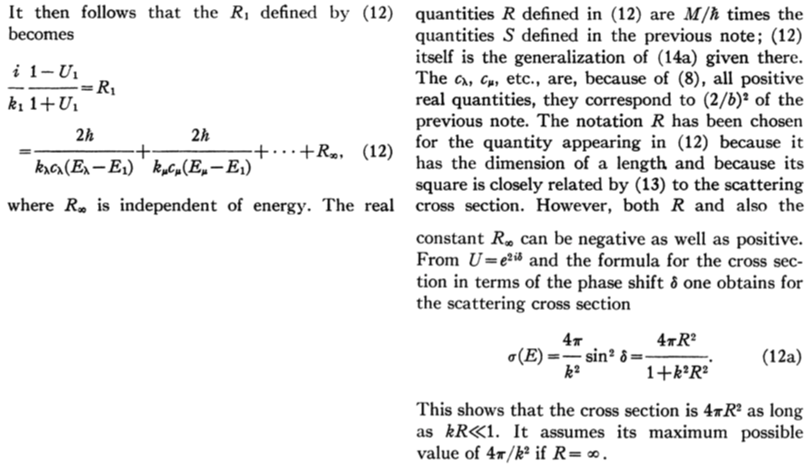In quantum integrability and related topics a lot of not-so imaginative terminology is used. One may hear people talk about "Q-operators", "R-matrices", "S-matrices", "T-operators", as well as "L-operators". In fact, this has further led to even less poetic names such as "RTT-relations" and "RLL-relations".
My question is if anyone knows what the origin of this terminology is: where and when were they first used? I am particularly interested in this for the name "R-matrix", and why the letter "R" was chosen.
The physical roots of quantum integrability lie in several different areas, which has led to quite a few examples of terminology that (only) makes sense in one of these contexts. An example is "auxiliary" vs "quantum" (or "physical") space: this is sensible nomenclature for spin chains in the quantum-inverse scattering method, but arbitrary from the vertex-model viewpoint. In any case, having these different possible origins makes it a bit harder to trace back terminology.
After a bit of research my best guess for an explanation of the origins of the above terminology is as follows. I'd be glad for any corrections or comments.
The S-matrix was probably first; it comes from QFT, and the "S" stands for "scattering". In quantum-integrable cases many-particle scattering can be factorized into two-particle scattering processes, and the consistency condition for this factorized scattering is a version of the Yang-Baxter equation.
Perhaps, then, the R-matrix's name (or notation $R$) was chosen to resemble "S-matrix" (or $S$). Note that Yang writes $Y$ for the R-matrix. Baxter usually uses $w$ (or $W$) for the vertex weights, i.e. the entries of the R-matrix: he seems to prefer the star-triangle relation, i.e. the Yang-Baxter equation in components. According to Perk and Au-Yang the notation "R" comes from the Leningrad school.
In can further imagine that Baxter might have denoted his operator by $Q$ to continue this (anti)alphabetic sequence.
Given these names it's not strange that other quantities may get (nick)names that are formed in analogy. This has happened to the operators originating in the classical inverse-scattering method: the Lax operator, sensibly denoted by $L$, is also called the "L-operator" and the monodromy matrix, $T$, the "T-operator". (Maybe the notation $T$ for the latter comes from its relation to the transfer matrix, for which $t$ is a reasonable notation -- although Baxter writes $V$ for the latter.)
Finally the names "RTT-" and "RLL-relations" just represent the form of those equations (expressing the quasitriangularity of the R-matrix for a representation) given the preceding notation.

